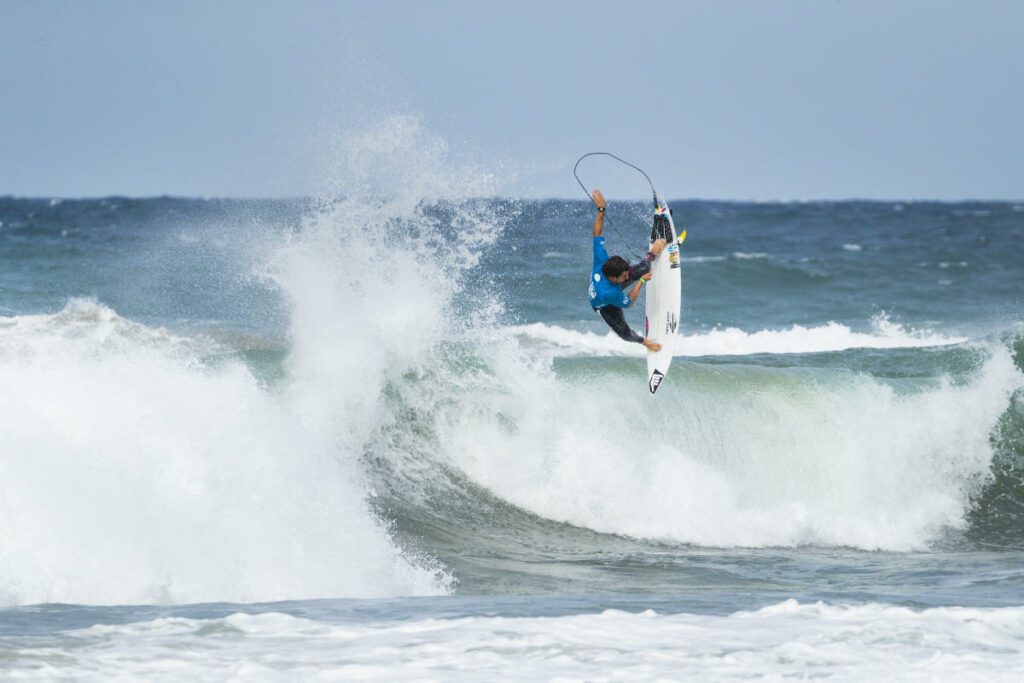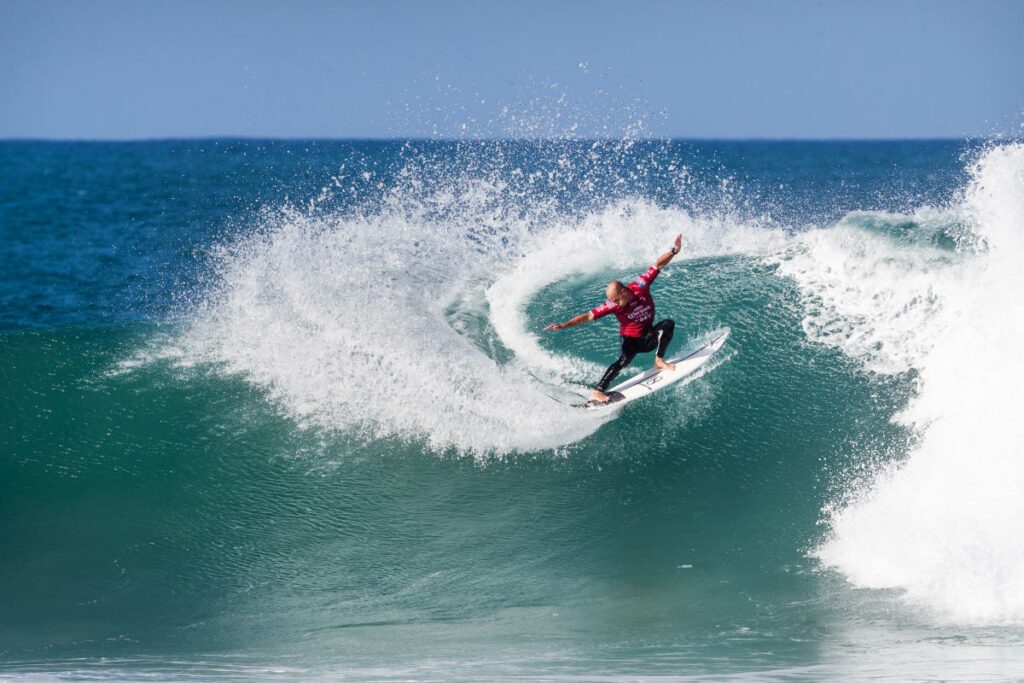Are Brazilian Champions Detrimental To The WSL?
A dive into finance, viewership, rivalry, and more.
We’ve all seen it before.
Every time a Brazilian surfer gets the short end of the stick in a close heat, social media is inundated with claims of judges’ partiality. “Fuck the WSL” and “World Shame League” compose some of the poetry dished out toward the league’s judging panel. Usually these comments are seen for what they really are — angry outbursts from passionate fans.
But when a CT surfer says something along those lines, it’s a different story. You stop and take notice.
“You know why they didn’t give Ítalo the score, right?” inquired one surfer, who asked to remain anonymous, days after the Boost Mobile Margaret River Pro had ended.
“Because they didn’t deem the air complete?” I suggested.
“Nah,” he explained. “The Brazilian domination is not good for business. The WSL is tired of Brazzos winning everything and they’ll bring us down whenever they have the chance.”
A grave accusation. And as American astronomer Carl Sagan famously said, extraordinary claims require extraordinary evidence. None was presented here.
But since this wasn’t the first time a Brazilian competitor told me the exact same thing, I didn’t dismiss this unproven conspiracy theory right away. I’m not on Tour. I don’t have an athlete’s perspective.
So I wondered: Could there be any truth to this?
Personally, I have a hard time picturing WSL’s CEO, Erik ‘Elo’ Logan, calling Head Judge Pritamo Ahrendt and ordering the judges to lower Brazzos’ scores whenever possible. Seems just as far-fetched as, say, a pedophile ring in a pizzeria’s basement. Anyway, I started asking around.
“I don’t think there’s any of that,” former CT surfer Ian Gouveia told me. “But I’m sure if you ask all the boys, you’d learn that some of them think it’s true. Maybe I’m naïve, but I just don’t see it.”

While it’s a bit surprising (and troubling?) that some Tour surfers actually believe they’re targeted in a coordinated effort, you can’t take conspiracy claims made by someone who wishes to remain unnamed too seriously. Especially when a colleague refutes those exact claims and has no problem going on record.
So while nothing really indicates that there’s a calculated attempt to undermine Brazilian surfers on Tour, a valid question remains: Could the Brazilian Storm’s domination of the competitive scene be detrimental to WSL’s success?
It’s important to clarify that we’re speaking about the Men’s CT in this piece. On the women’s side, Brazil hasn’t dominated the field, so the questioning doesn’t apply (find out why there’s no Female Brazilian Storm here).
Back to the WSL, Elo laid out the governing body’s plan for the future quite clearly in an interview, in May.
“There are some 380 million-odd people interested in surfing globally. My job is to find those people, introduce them to competitive surfing, and get them to watch our content,” he told Sports Section. “We’re one of the youngest sports on the planet, and we’re probably one of the most global sports. Surfing really is a global sport.”
380 million people? That’s a big figure, even for the ever-optimistic WSL. But whether or not those numbers are inflated is irrelevant for the moment. The point is that the WSL is aiming to increase its global audience. And the winning ways of the Brazilian Storm have unquestionably helped in that endeavor.
Let’s examine.
Since Medina’s first Title in 2014, Brazil has consistently drawn the biggest viewership numbers in surfing. Ask anyone who works on the webcast and they’ll tell you (albeit without going on record, for some reason) that Brazilians are by far the biggest audience in the sport.
And while it’s near impossible to obtain any real audience and viewership numbers from the WSL—they don’t release them—monitoring the Youtube and Facebook live feeds in these last Tour events verify that claim: At The Ranch, on Saturday afternoon, the English-speaking webcast had 7,800 viewers on YT while its Portuguese-language counterpart had 18,000. Even during the Aussie leg, when the events took place in a completely opposite time zone (for Brazilian viewers, contests started at 8pm and finished at 5am), the Portuguese webcast still had more viewers—sometimes even double the audience.
“The success of the Brazilian Storm has definitely diversified the viewership, bringing in more fans and followers from Latino and South American nations,” says …Lost founder and master shaper, Matt Biolos. “It’s made the sport become fully global in scope.”
The problem is that the big bucks still lie in the US/AUS markets. Growing globally is great, but means very little when sponsors are still concentrated in the more traditional surfing nations.
“I believe these Brazilian surfers are raising the performance bar and have challenged (and beaten) the status quo. They are entertainers as well as athletes, but the facts are that it does make things more difficult for the powers that be in Professional Surfing (WSL) and possibly certain brands in the surf business using professional surfing as the primary means to market their wares. History shows that US and AUS companies are the primary financiers of professional surfing, driving the business and flipping the bill,” explains Biolos. “These companies will be reticent to fund events and will seek other avenues to reach the surfing public.”
The WSL seems to know this very well, as they still treat the English-speaking public as their main audience. Hence the huge discrepancies in the viewing experiences. While the English webcast enjoys a substantial investment—with numerous presenters, interviewers and commentators covering the action in loco at every event—the Portuguese webcast is done by a team of three guys, sitting in front of a screen in WSL’s office in California. Whenever there’s a talking head (i.e. Strider in the channel or Pete Mel checking out equipment), they try their best to translate, on the spot, what’s being said.
It’s quite confusing and they rarely get it right.
Brazilian athletes are still interviewed in English, made to answer in a foreign language, even though the majority of the public watching doesn’t speak English either. WSL’s biggest audience—Brazilians—get a far less engaging experience watching the webcast.
That’s reprehensible, but understandable. Brazilians might bring in more viewership, but not more money. The Brazilian surf industry is in dire straits right now. Brands are struggling, media outlets are shutting down, events are at an all time low, and the number of unsponsored top surfers is higher than ever. That’s why non-endemic brands are the main sponsors of Brazilian CT surfers. Local surf brands usually can’t afford them.
Sponsoring top surfers makes sense for mainstream brands because of the athletes’ huge following – but, as Biolos points out, “the vast majority of these fans don’t surf. Many aren’t able to purchase the core products that most surfers are endorsing. Thus Gabby has so many non-endemic sponsors, selling things the viewers can buy, like razors. I believe Brazilians can bring far more eyes to the sport side of surfing, but it’s not like they are taking part in it. There is no doubt in my mind, personally, that if Anglo/English-speaking surfers were more dominant, the money would follow.”
Australia, in contrast, currently has only one surfer in the Top 10 and draws a considerably smaller audience. But it’s a bigger market, with more money floating around for events, sponsorship, and media. State governments get behind the sport like nowhere else, footing a big chunk of the bill for the four events that recently took place Down Under. Hell, the average Aussie surfer still buys surf mags! Talk about support for surfing.
In these strange times where social media dictates much of our lives and instant gratification is the drug of choice, it’s easy to look back half a decade and consider it a big chunk of history—but it ain’t. When we speak about a Brazilian domination on the competitive scene, we have to acknowledge that it is a fickle run. Brazil has brought home four World Titles in the last 7 years. When you consider that John John Florence was out of commission for nearly two of those, you realize that Brazzo surfers haven’t been all that dominant, after all.
Let’s compare: Australia has 16 World Titles, the longest streak being 7 consecutive Titles, from 78-84. The US has 15 Titles, with five in a row from Slater in the ‘90s (never forget!) and Hawaii has 7 Titles.

“I feel Brazilians will still dominate for a few years, ‘cause right now only John John can match our top surfers,” Ian Gouveia added. “But things will eventually change. It’s only natural.”
In surfing, just like in all competition, fierce battles are far more interesting than one-sided affairs. And everyone in the surfing world can’t wait for JJF to return to competition.
“I don’t believe Brazilian Champions are bad for the WSL, as rivalries are great for any sport,” explains former pro and celebrated Brazilian surf journo, Julio Adler. “Just look at the UFC. Most of their champions aren’t American, yet the US is their biggest market.”
In that sense, it can be argued that Brazilian champs can only be detrimental to the sport if there are no other nationalities battling for wins. As long as John is the mix, English-speaking fans would have someone to get behind and theoretically wouldn’t lose interest in surfing, drawing sponsors away from the sport. And that’s assuming Aussies will get behind John too. If JJF is out again, or decides to retire and go sailing around the globe or something, that would force the emergence of a new, stronger US/AUS generation down the line. Nothing breeds resilience like hard times.
“Think about a younger brother who grew tired of getting his ass kicked and finally learned to fight,” explains super coach Leandro Dora. “That’s how us Brazilian surfers from the ‘70s and ‘80s evolved. We observed and learned from Aussies and Americans. A few generations later, we’re beating those guys.”
Perhaps a worst-case scenario for the WSL—where Brazzo domination continues without any real challengers, causing sponsors to abandon the Tour—wouldn’t be all that negative in the long run. Because in order to become truly global, surfing needs to stop depending exclusively on American or Australian markets.
“The success of the Brazilian Storm is an eye-opener for European surfers,” explains Francisco Spínola, GM of WSL Europe. “Because it shows that the dynamics of the sport can change quickly. If, for decades, Aussies, Americans, and Hawaiians completely dominated competitive surfing, right now Brazilians are the main force. Who knows if in the near future, with a lot of hard work and proper support, European surfers aren’t the ones fighting for World Titles?”
The Brazilian domination of the CT could indeed, in the short term, mean less sponsors for the WSL. In the long term, however, it could help make surfing truly global, bringing in more eyes to the sport, inspiring surfers from developing nations everywhere, and making the Tour less dependent of the US/AUS markets.
Seems like, after all, Brazilian World Champs are actually beneficial to WSL’s success.
Perhaps a proper Portuguese-language webcast is in order now?





Comments
Comments are a Stab Premium feature. Gotta join to talk shop.
Already a member? Sign In
Want to join? Sign Up